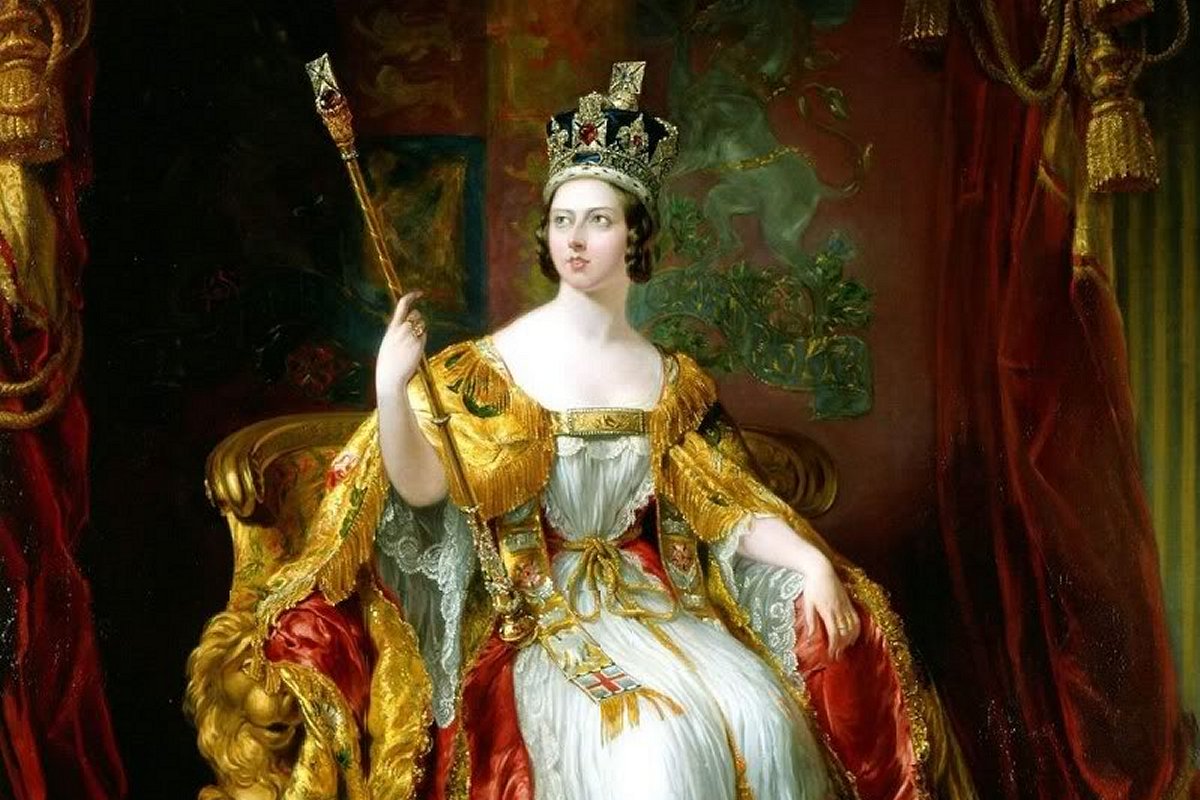
With the coronation of King Charles III and Queen Camilla only five weeks away, it’s time to begin a series on the fabulous jewels worn by Britain’s kings and queens at their coronations. We begin today with Queen Victoria, whose coronation jewels included a scaled-down crown and a too-small ring.
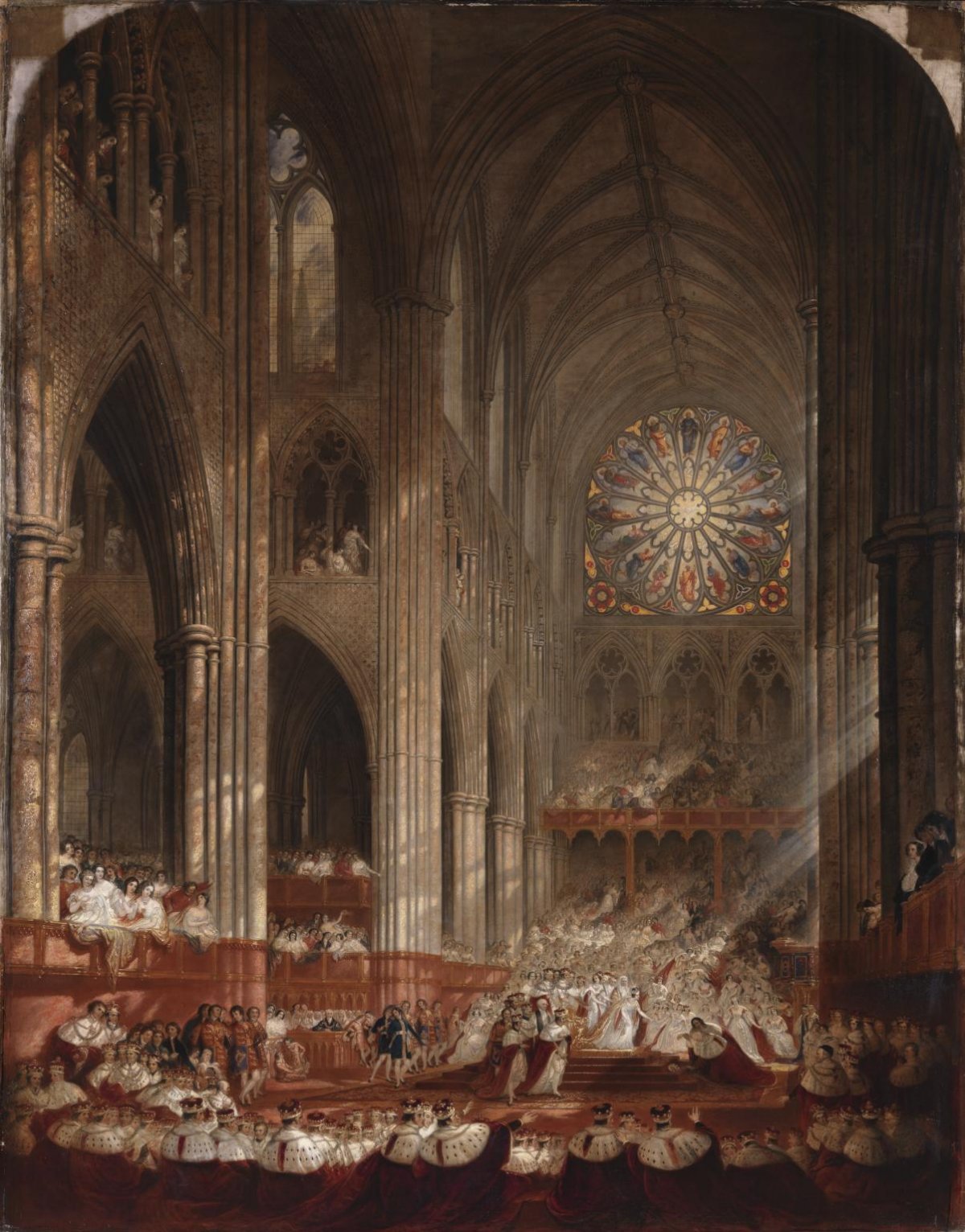
Queen Victoria was only 19 when she was crowned queen in a glittering ceremony in Westminster Abbey on June 28, 1838. The young queen had been monarch for more than a year ahead of the ceremony. The government of the day, led by Victoria’s confidant Lord Melbourne, decided on a budget of £70,000 for the event, a compromise between the lavish coronation of King George IV and the scaled-back ceremony held for King William IV.
But even with the allotted budget and extensive time for planning, the day of the coronation was a little bit chaotic. There was very little rehearsal of the actual ceremony, which led to continual confusion. Even Queen Victoria herself had barely rehearsed her part of the proceedings. Only after serious convincing from Lord Melbourne had she agreed to even visit the Abbey on the night before the coronation itself.
The most famous blunder during the ceremony was really just an accident. Lord Rolle, an 82-year-old peer, fell as he tried to climb the steps to pay homage to the young monarch. In a gesture that impressed many in attendance, Victoria rose from the throne and moved toward Rolle so that he wouldn’t have to try to manage the steps again. The moment is depicted in the coronation portrait above, painted by John Martin in 1839.
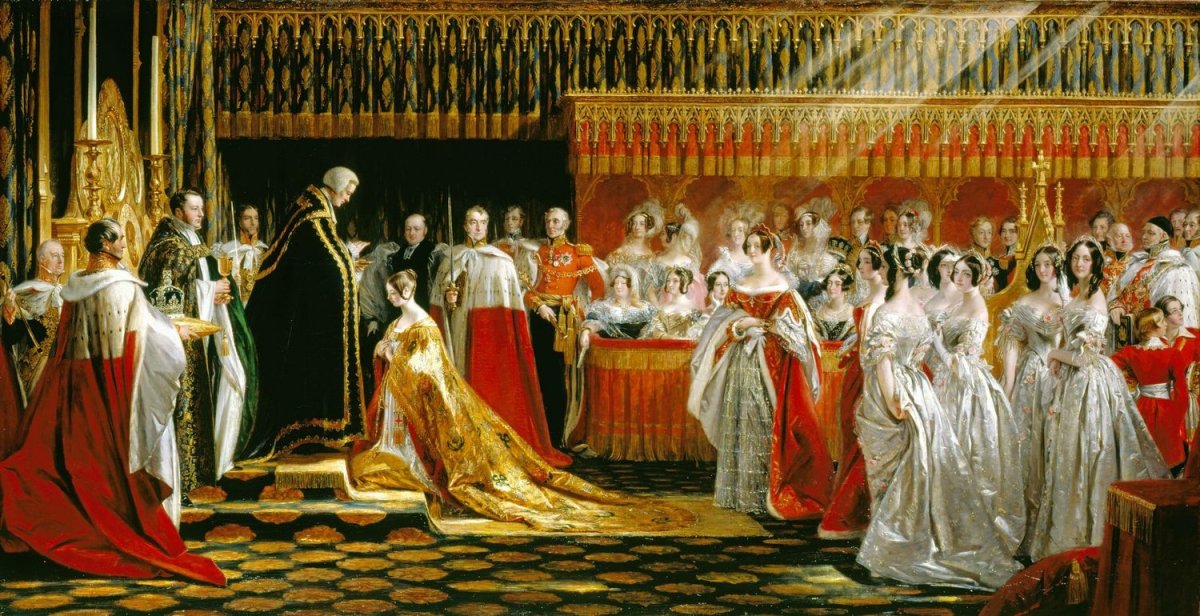
The ceremony was presided over by the Archbishop of Canterbury, William Howley, who had also crowned King William IV and Queen Adelaide seven years earlier. Charles Robert Leslie’s lovely painting of the ceremony shows Howley giving the sacrament to the young monarch near the end of the ceremony. Later, Victoria’s half-sister, Princess Feodora, wrote that the moment depicted “was the most touching of the whole ceremony, and one that is always before me; human greatness bowing before greatness above.”
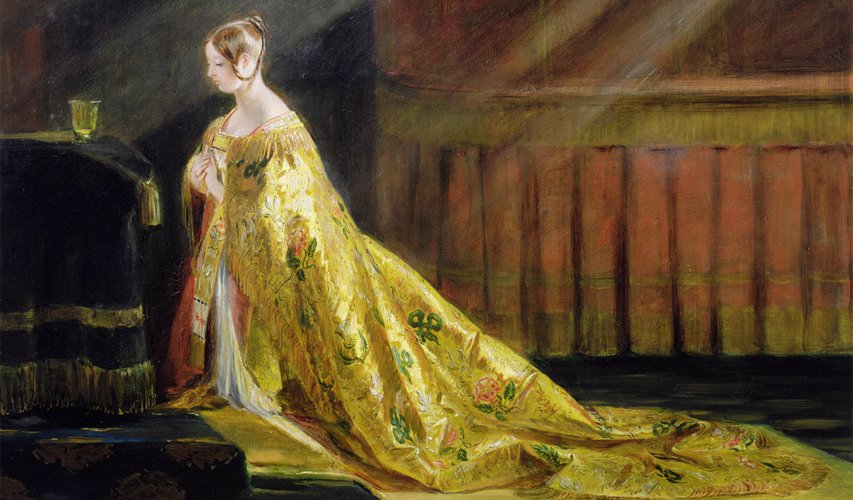
In the painting, Victoria wears no jewelry, just her white coronation dress and the grand gold dalmatica (a kind of ceremonial robe worn during a British coronation). Here’s another Leslie study from the coronation showing the young queen in her robes.
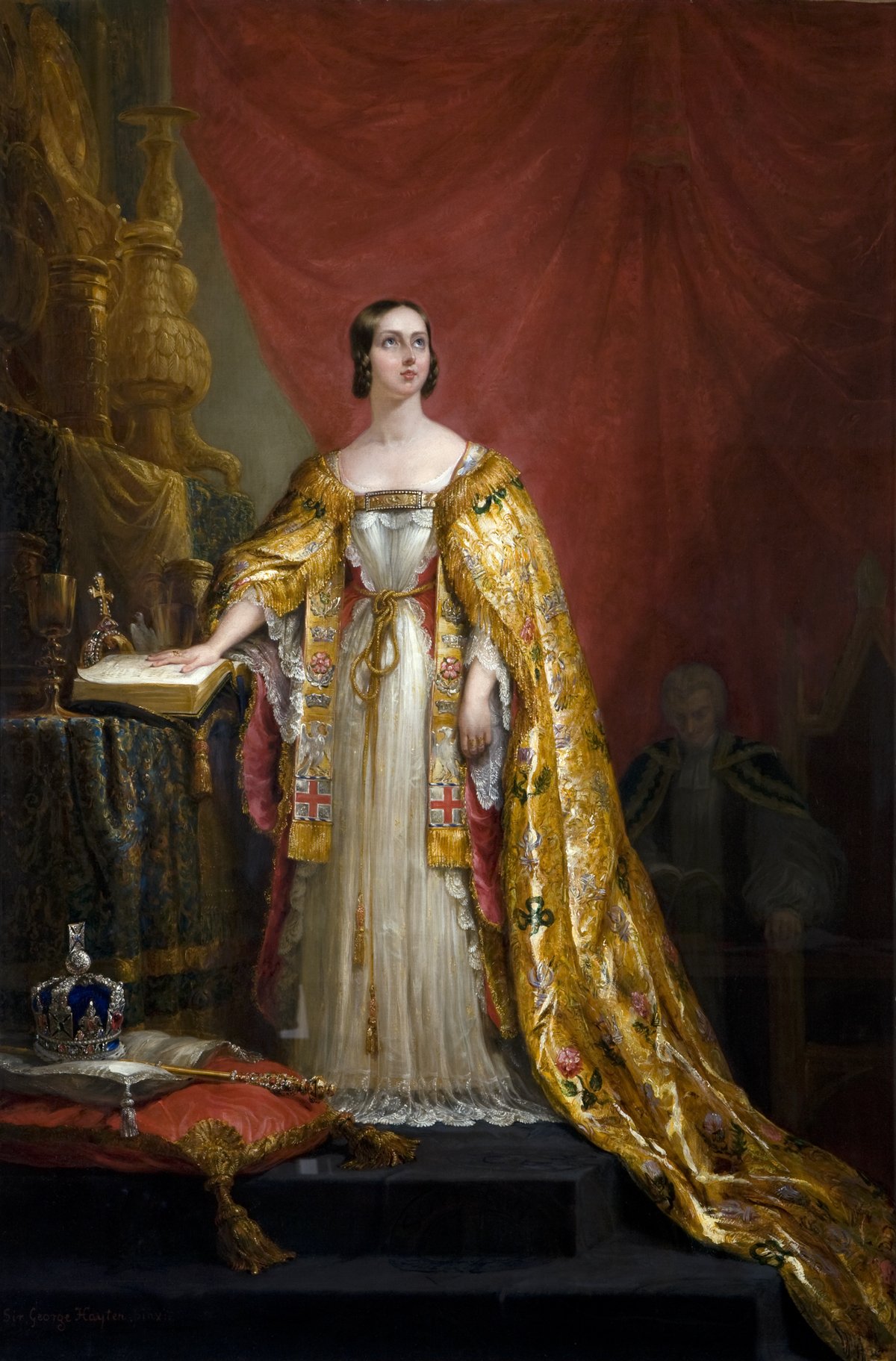
The beautiful gold robes are also depicted in this portrait of Victoria taking her coronation oath, painted by George Hayter.
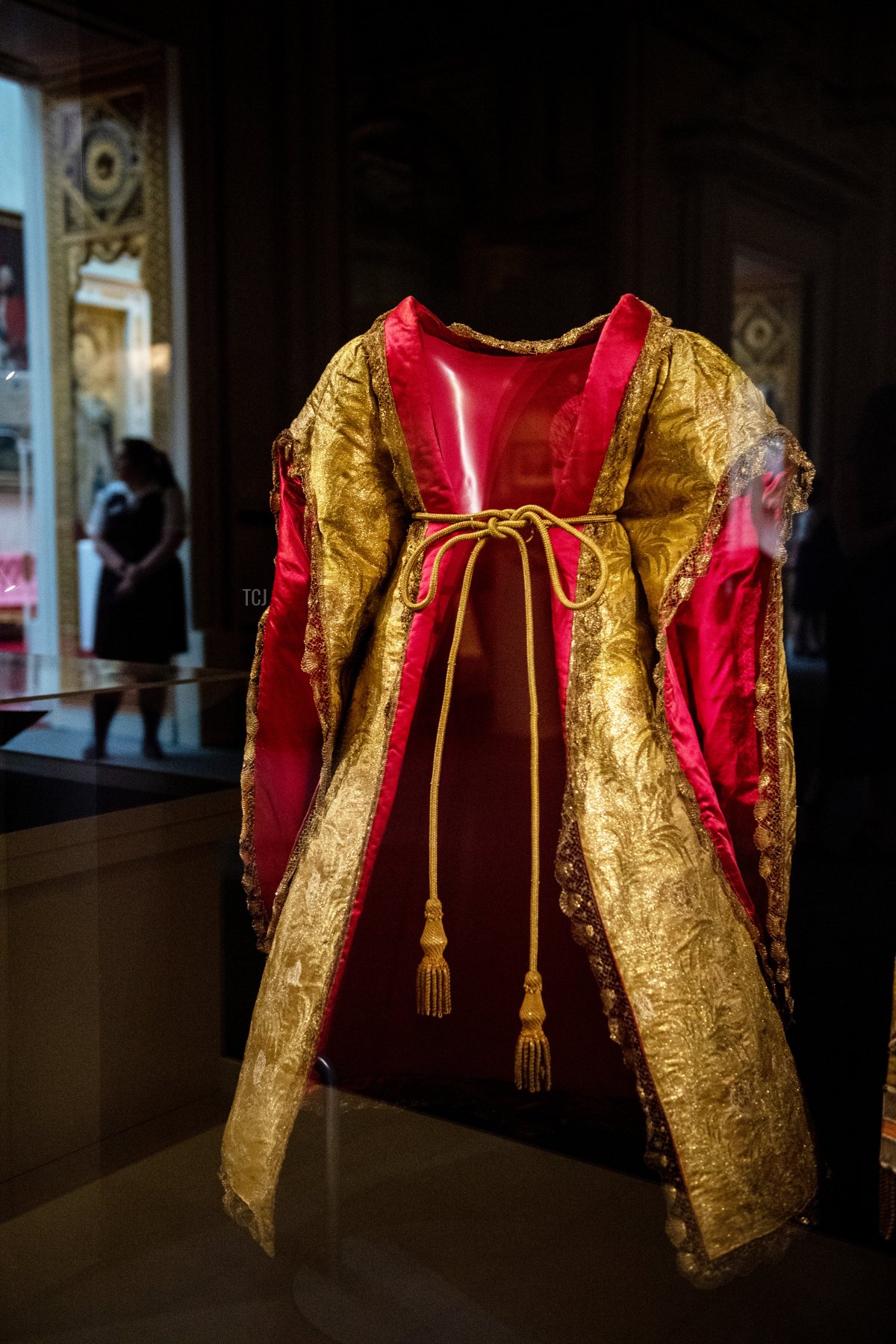
Part of the robes, the gold and red Supertunica, have survived. Victoria mentioned the Supertunica in her account of the coronation ceremony: “I retired to St Edward’s Chapel, a small dark place immediately behind the Altar, with my Ladies and Train-bearers; took off my crimson robe and kirtle and put on the Supertunica of Cloth of Gold, also in the shape of a kirtle, which was put over a singular sort of little gown of linen trimmed with lace; I also took off my circlet of diamonds, and then proceeded bare-headed into the Abbey; I was then seated upon St Edward’s chair where the Dalmatic robe was clasped round me by the Lord Great Chamberlain.”
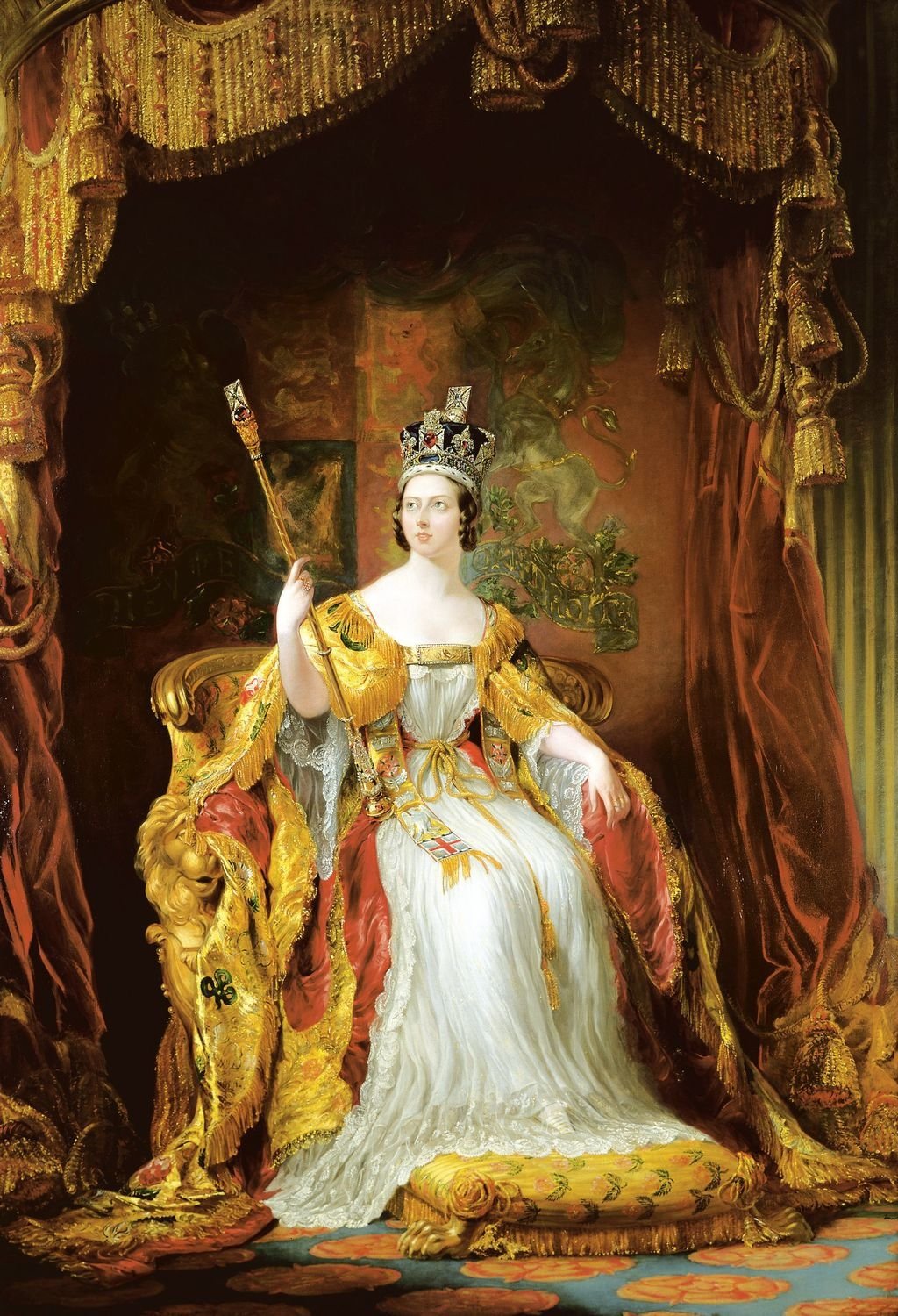
Along with the “circlet of diamonds” mentioned by Victoria, contemporary newspapers described her as wearing a “circlet of gold” on her head. But the small ornament she wore on her arrival at the Abbey paled in comparison to the jewel placed on her head during the ceremony: her Imperial State Crown.
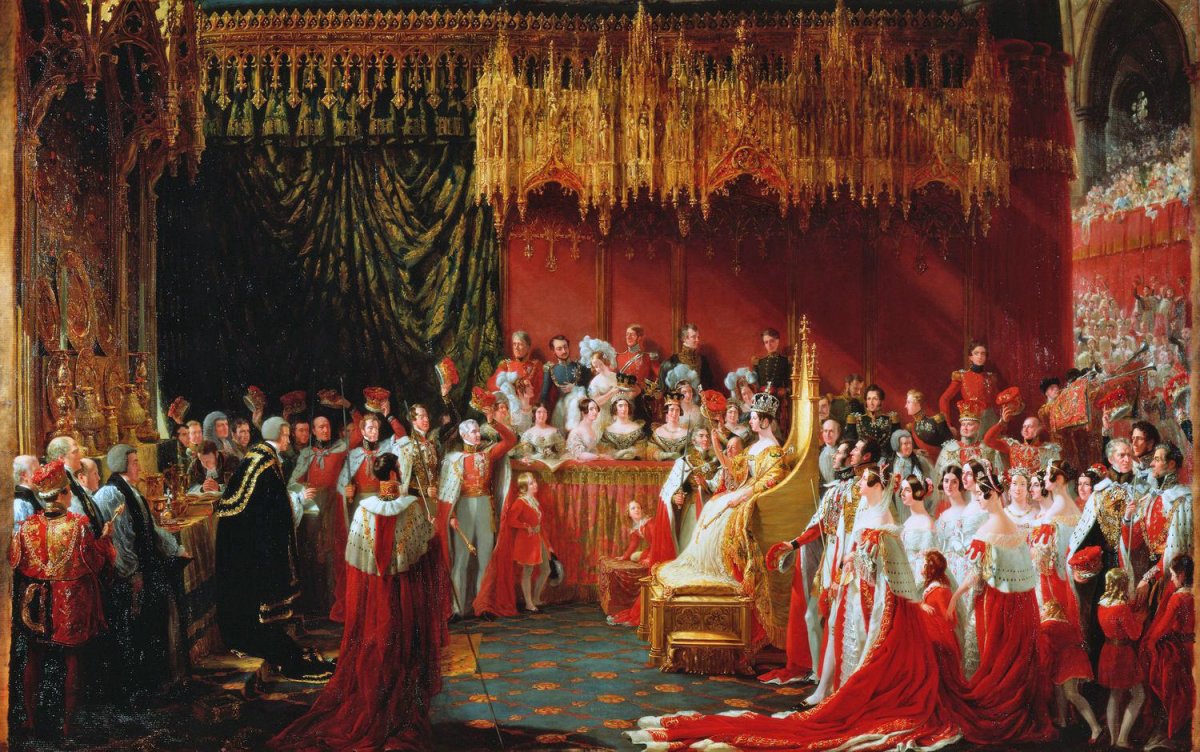
Most British monarchs have been crowned with St. Edward’s Crown (the crown currently being prepared for King Charles III to wear at the moment of crowning during his upcoming coronation). But it was thought that particular crown would be far too large and heavy for the petite Victoria to wear during the ceremony. Instead, a new state crown was made for her use by Rundell, Bridge & Co. The new crown was set with a series of spectacular jewels from the royal collection, including the Black Prince’s Ruby and the Stuart Sapphire. More than 3,000 total gems were set in the crown.
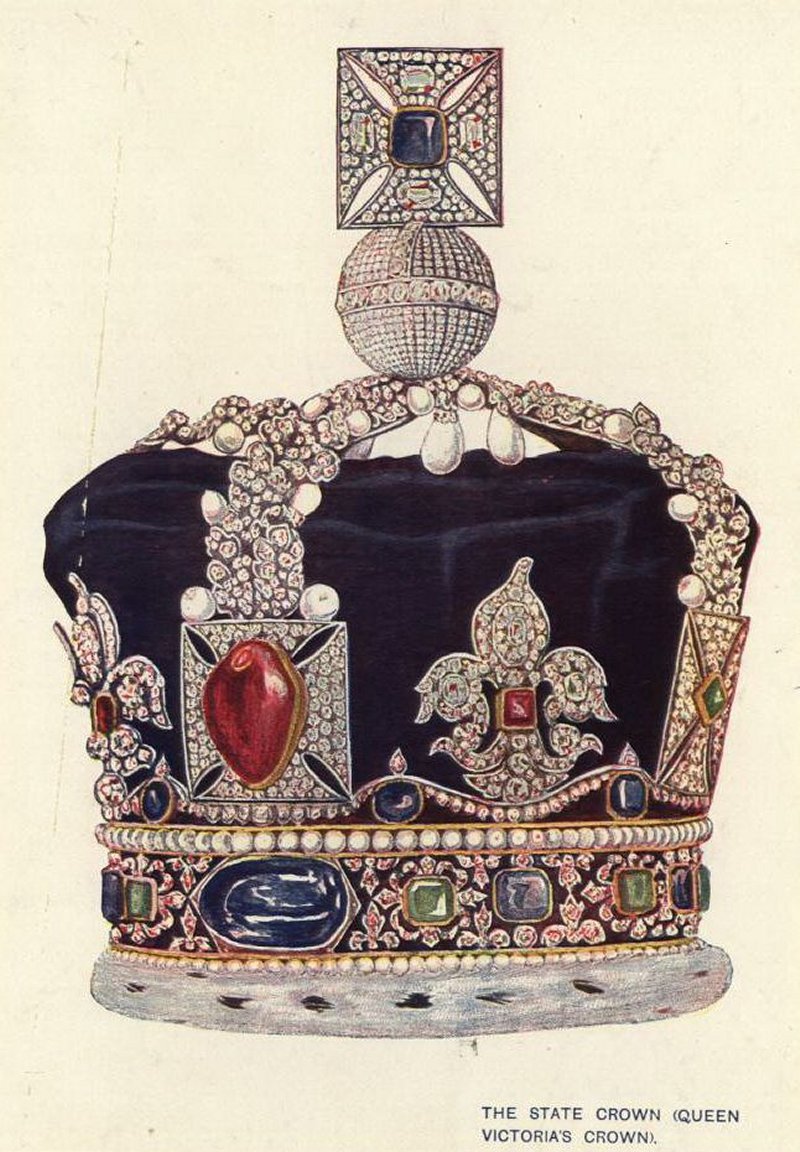
Queen Victoria continued to use the Imperial State Crown in the years that followed the coronation. The crown endured a notable mishap in 1845, during the State Opening of Parliament. The Duke of Argyll was carrying the crown on a cushion during the procession when it fell to the ground, causing significant damage. Queen Victoria lamented that the crown looked “all crushed, & squashed, looking like a pudding that had sat down.”
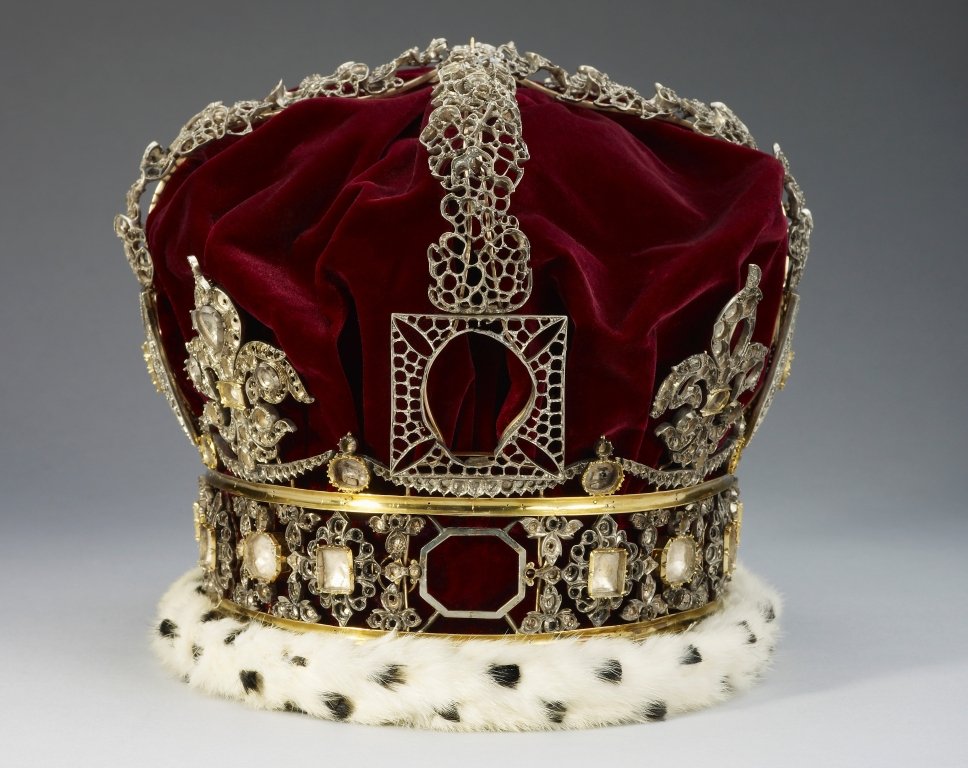
The crown was repaired followed the 1845 incident (at the cost of £150) and continued to be used. But in 1937, King George VI commissioned the creation of a new version of the crown. A lighter platinum frame was built, closely copying the structure of Victoria’s crown, and the gemstones were then transferred to the new Imperial State Crown. Today, the original frame of Victoria’s crown still exists in the Royal Collection (without its monde and cross).
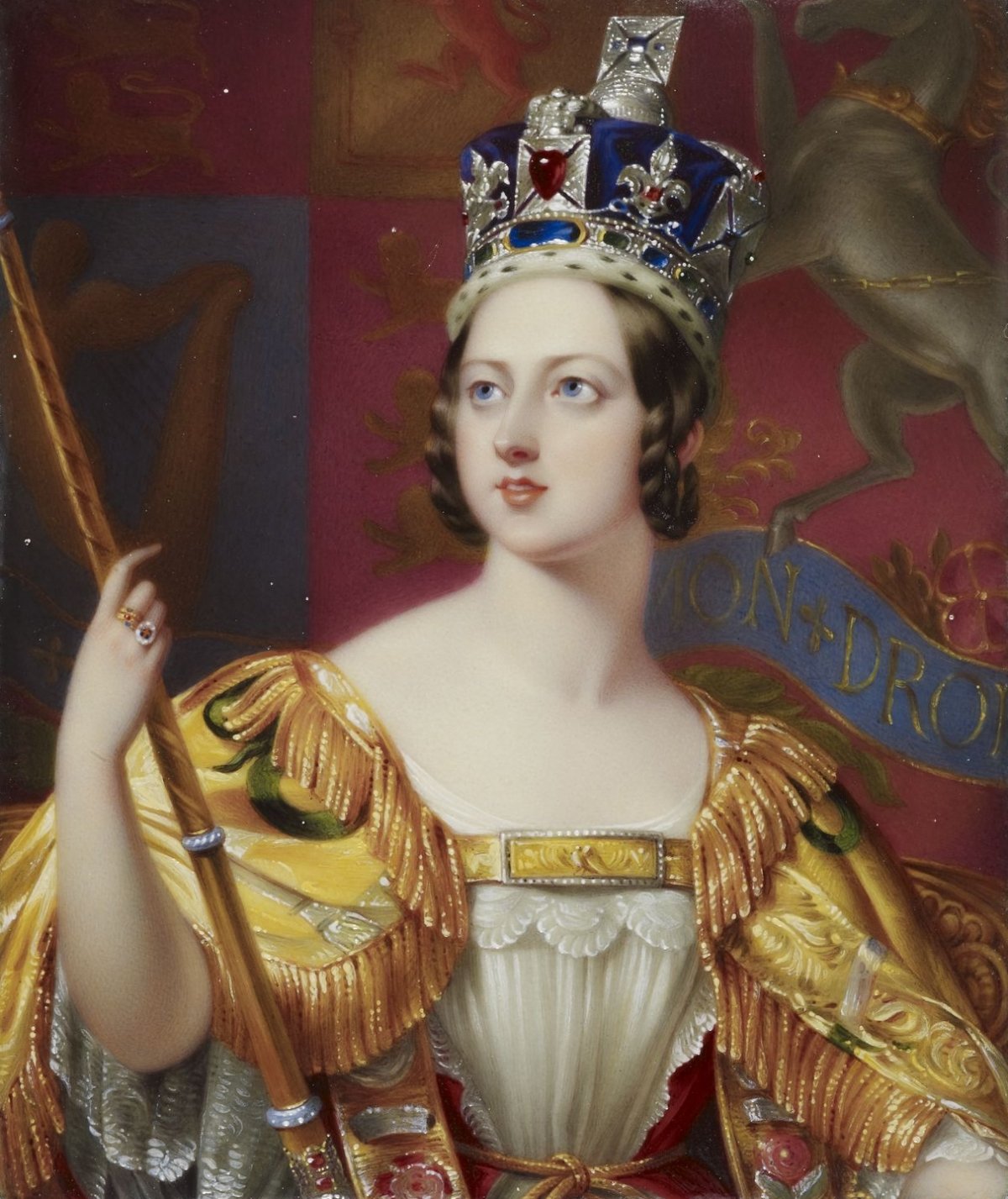
This miniature version of Victoria’s coronation portrait also showcases another important jewel worn by the monarch during the ceremony: her coronation ring.
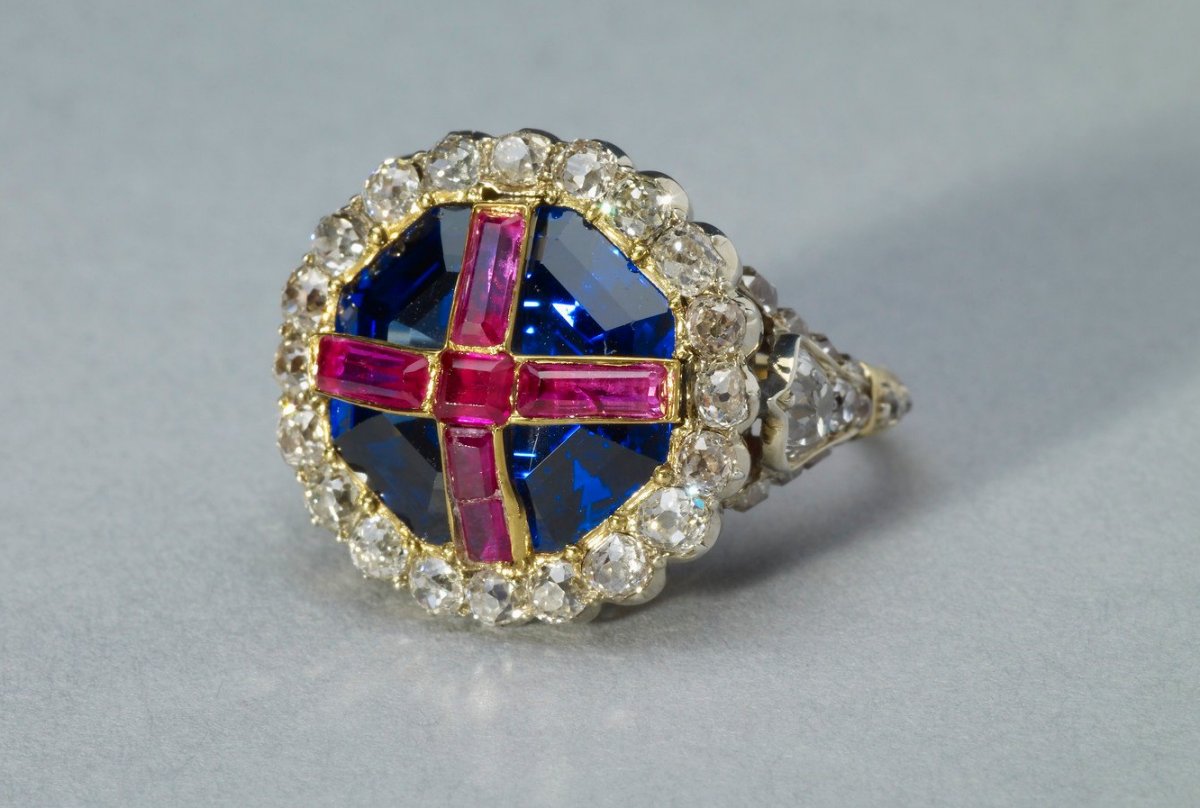
Sometimes called the “wedding ring of England,” the Sovereign’s Ring is placed on the monarch’s hand during the ceremony. During the planning for Victoria’s coronation, officials decided not to use the ring made for King William IV in 1831, as it was much too large for Victoria’s hand. A new coronation ring was subsequently made just for her. It was designed to look very similar to the Sovereign’s Ring, just on a much smaller scale.
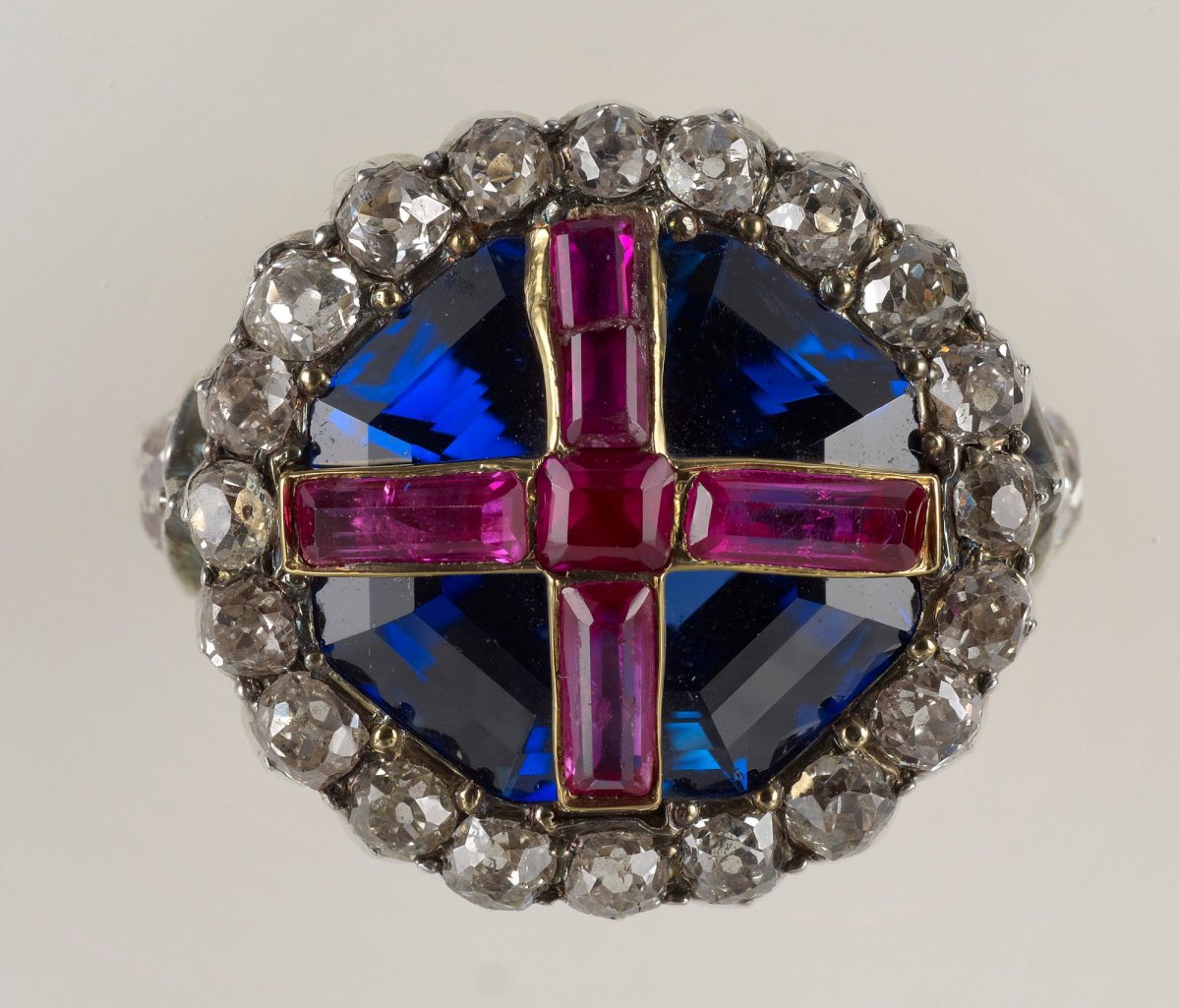
As it turned out, the scale of the new ring ended up being too small. The jewelers of Rundell, Bridge & Co. misunderstood their assignment slightly, and they made the ring to fit Victoria’s pinky finger, not her fourth finger. But during the service, the Archbishop of Canterbury forced the too-small ring on to her fourth finger anyway, causing swelling and a great deal of pain. The Royal Collection notes that Victoria had soak her right hand in ice water after the ceremony in order to get the ring off. She noted in her journal, “I had the greatest difficulty to take it off again, – which I at last did with great pain.”
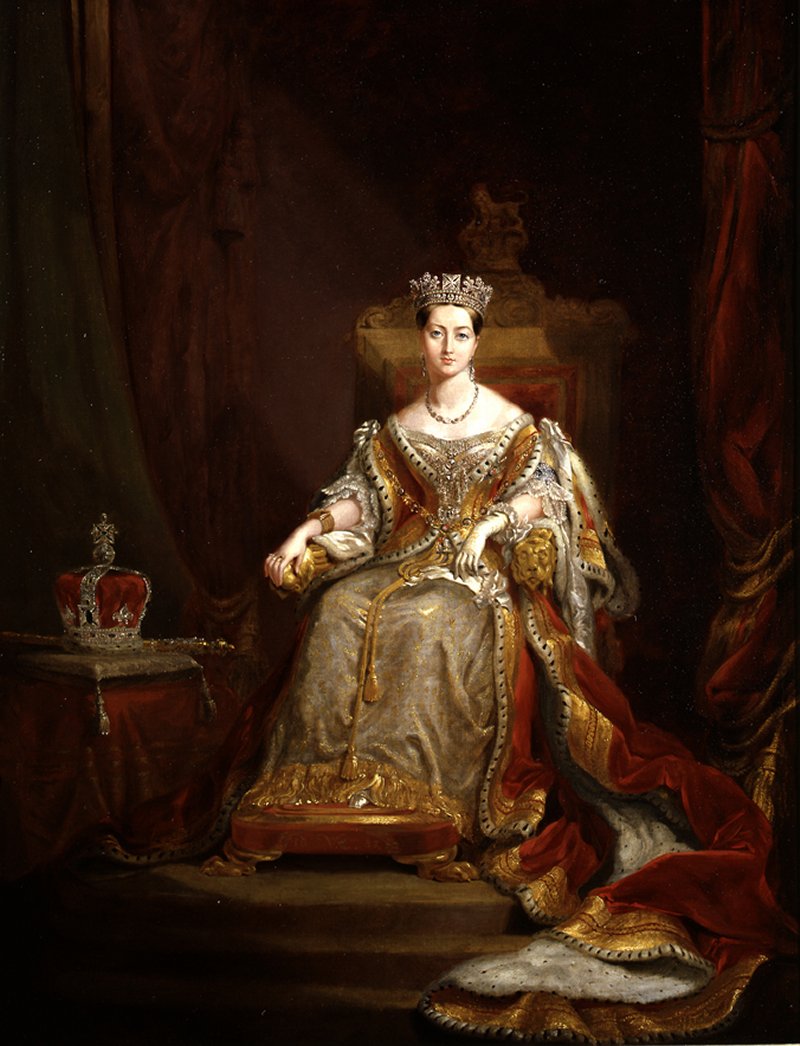
This portrait of Victoria in her coronation robes shows her wearing diamonds, including a jewel we know for sure that she wore on her coronation day: the Diamond Diadem.
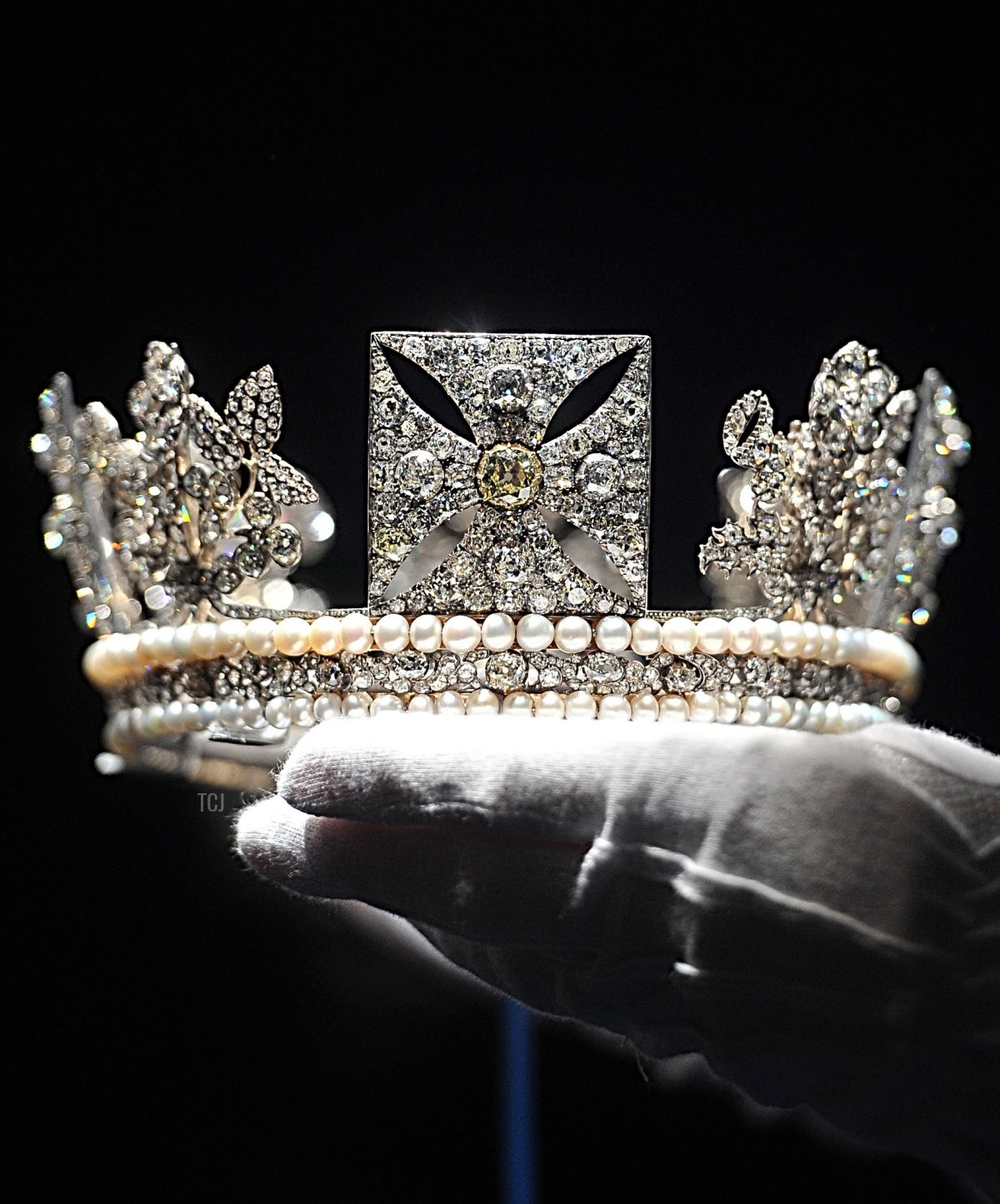
The diamond and pearl circlet was made for Victoria’s uncle, King George IV, who wore it on his coronation day in 1821. Queen Victoria wore the diadem in the procession back to the palace after her 1838 coronation ceremony had ended.
Leave a Reply
You must be logged in to post a comment.